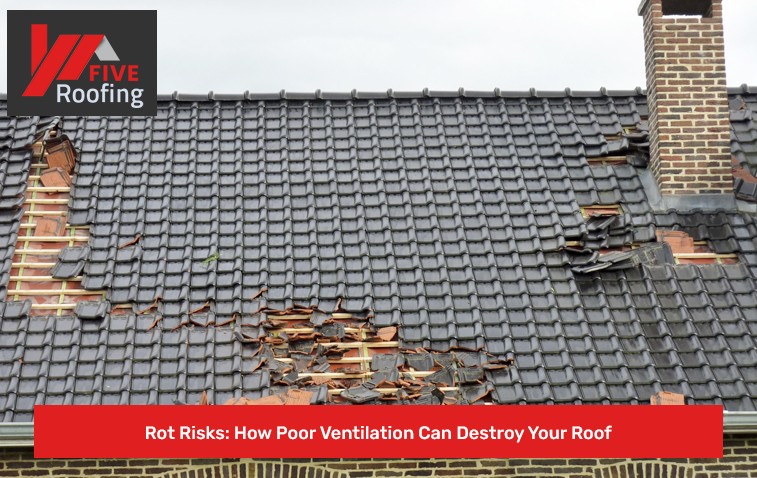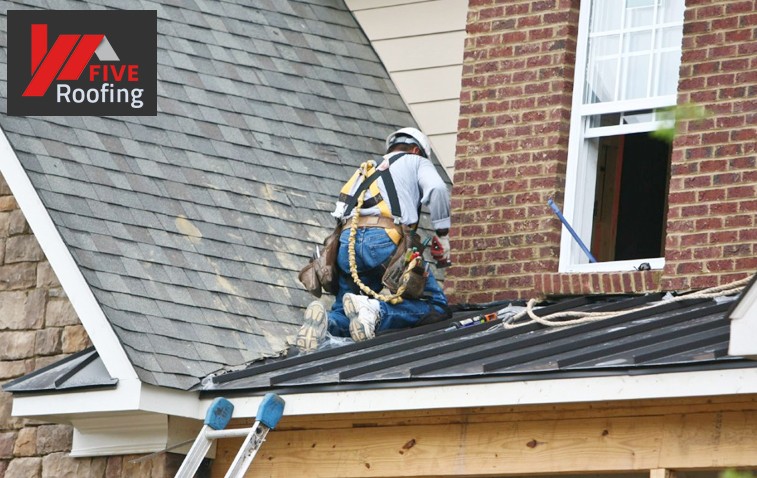Roofs protect our homes from rain, snow, and sun. They keep us safe and dry inside. But sometimes, things can go wrong with our roofs. One big problem is rot. Rot happens when parts of the roof get wet and stay wet for a long time. This wetness makes the wood soft and weak. Poor ventilation is a major cause of this problem. Ventilation means letting air move freely. When air can’t move through the roof space, it can cause many issues. Protecting our roofs protects our homes.
Furthermore, there are different types of roof rot. One type is called dry rot. Despite its name, dry rot still needs moisture to start. However, it can spread even when the area seems dry. Another type is wet rot. Wet rot needs a lot of moisture to thrive. It usually happens in areas with constant leaks or poor drainage. Consequently, understanding the different types of rot helps people fix the problem correctly.
Additionally, signs of roof rot include soft spots on the roof, discoloration of the wood, and a musty smell. If you see these signs, you should get your roof checked by a professional. Therefore, early detection is key to preventing serious damage.

Poor ventilation is a big reason why roof rot happens. Ventilation means letting air flow through the attic space. When there is not enough airflow, moisture gets trapped. This trapped moisture comes from different sources. For example, warm air from inside the house rises into the attic. Also, moisture can come from leaks or even just from the outside air.
Because of poor ventilation, this moisture has nowhere to go. It stays trapped in the attic. Eventually, this moisture soaks into the wooden parts of the roof. This constant wetness creates the perfect environment for rot to start and grow. In addition, poor ventilation also makes the attic warmer in the summer. This extra heat can also damage the roof.
Consequently, good ventilation helps remove this moisture. It keeps the attic dry and cool. This prevents rot from starting. Therefore, proper ventilation is very important for a healthy roof.
There are several signs that show your roof might have poor ventilation. One sign is a hot attic. If you go into your attic on a warm day and it feels extremely hot, that is a bad sign. Another sign is moisture or condensation on the underside of the roof deck. This means that moisture is getting trapped in the attic.
Furthermore, ice dams are another sign of poor ventilation. Ice dams are ridges of ice that form at the edge of the roof. They happen when heat from the house melts snow on the roof. The melted snow then refreezes at the colder edge of the roof. This can cause water to back up under the shingles and leak into the house.
Moreover, peeling or blistering paint on the eaves or soffits can also indicate poor ventilation. These areas are located under the roof overhang. When moisture gets trapped, it can cause the paint to peel. Finally, mold or mildew growth in the attic is a clear sign of moisture problems and poor ventilation. Therefore, if you see any of these signs, it’s important to check your roof ventilation.
Improving roof ventilation is important for preventing rot and other roof problems. One way to improve ventilation is by installing vents. There are different types of vents. Soffit vents are located under the eaves. They let air enter the attic. Ridge vents are located at the peak of the roof. They let air exit the attic.
Additionally, gable vents are another type of vent. They are located on the gable ends of the house. These vents also help with airflow. Furthermore, you can use a combination of different vents to create a balanced ventilation system. This ensures that air flows properly through the attic.
Therefore, proper installation of these vents is very important. A professional can help you choose the right vents and install them correctly. This will ensure that your roof has proper ventilation.

Besides installing vents, regular maintenance is also important for good roof ventilation. One important thing to do is to keep vents clear. Leaves, debris, and snow can block vents. This prevents air from flowing properly. Therefore, you should regularly check your vents and remove any blockages.
Additionally, make sure that insulation is not blocking the vents. Sometimes, insulation can shift and cover the vents. This also stops airflow. So, it’s important to check the insulation regularly. Furthermore, fixing leaks promptly is very important. Leaks introduce moisture into the attic. This moisture can cause rot and other problems.
Consequently, regular inspections by a professional can help identify potential problems early. This can save you from costly repairs later. Therefore, regular maintenance is key to keeping your roof healthy and well-ventilated.
Moisture enters the attic through several ways. Warm air from inside the house rises into the attic. Additionally, leaks in the roof or around chimneys can let water in. Moreover, even outside air can contain moisture that gets trapped in the attic. This moisture can then lead to problems like rot.
Besides preventing rot, proper roof ventilation offers many other benefits. It helps regulate the temperature of the attic. This keeps the house cooler in the summer and warmer in the winter. As a result, it can save energy costs. Furthermore, good ventilation can also extend the life of your roof shingles.
Homeowners can check their roof ventilation by looking for several signs. They can check if the attic feels excessively hot in the summer. They can also look for signs of moisture, like condensation or mold. Additionally, they can check if the vents are blocked by debris or insulation.
There are several types of roof vents. These include soffit vents, which are located under the eaves. Ridge vents are located at the peak of the roof. Gable vents are located on the gable ends of the house. Each type of vent plays a role in creating proper airflow.
Poor ventilation can significantly affect energy bills. A hot attic forces air conditioning systems to work harder. This increases energy consumption and leads to higher bills. Conversely, proper ventilation helps regulate attic temperature, reducing the load on the air conditioning system.
If roof rot is not addressed promptly, it can lead to serious structural damage. The weakened wood can cause the roof to sag or even collapse. Additionally, the rot can spread to other parts of the house, like walls and ceilings. This can result in extensive and costly repairs.